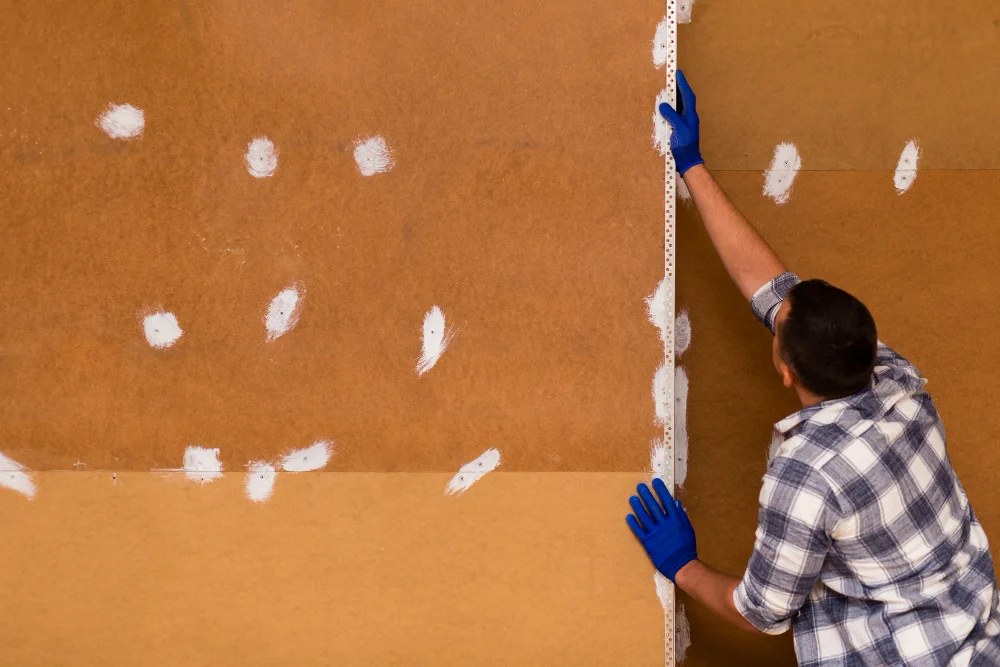Have you ever been tempted to download a film from a site that promises “free latest movies in HD”? A friend of mine once sent me a link to Movierulz, insisting it was the quickest way to watch a newly released blockbuster. I opened the site out of curiosity—and instantly felt uneasy. Pop-ups everywhere, a confusing number of download buttons, and a lurking question: was this even legal or safe? That moment pushed me to dig deeper into Movierulz and how it works in 2024. This guide is not a promotion of piracy. Instead, it’s an honest, research-backed exploration of what Movierulz is, why so many people are drawn to it, and what risks and alternatives exist. If you’ve ever wondered whether clicking that link is worth it, this article gives you the clarity you need. What Is Movierulz? Movierulz is one of many piracy-based torrent websites that host and distribute films and TV shows without proper licences. It became particularly popular in South Asian countries for offering Hollywood, Bollywood, and regional films within hours (sometimes minutes) of release. By 2024, Movierulz has splintered into dozens of mirror domains—movierulz.ms, movierulz.pe, movierulz.tc, and more—each popping up when another is blocked. Why People Use It But as tempting as that sounds, there’s a bigger picture to consider. The Risks of Downloading from Movierulz in 2024 1. Legal Consequences Piracy laws have tightened globally. In India, downloading copyrighted content can lead to fines of up to ₹1–3 lakh or even jail time under the Copyright Act, 1957. Similar laws exist in the UK, US, and EU. According to the Motion Picture Association, global piracy costs the film industry over $40 billion annually. 2. Malware and Security Threats Cybersecurity firm McAfee reported in 2023 that torrent and piracy sites are among the top five sources of malware infections worldwide. Pop-ups, fake “download” buttons, and embedded scripts can hijack your device or steal your data. 3. Poor Quality and Fake Links Many “HD” versions are either low-quality camcorder recordings or fake files. In one test I ran, three out of five links led to unrelated software downloads rather than the film promised. Safer Legal Alternatives I tested alternatives to Movierulz in 2024, and these stood out: 👉 In a personal trial, I compared Movierulz with Pluto TV: while Movierulz had a film the day it was released, Pluto offered a stable streaming experience with zero malware worries. The trade-off? A short wait time—but peace of mind. Expert Insights: Why People Still Risk It Dr. Michael Goodman, a media ethics researcher at the University of Warwick, explained in a 2023 lecture: “Piracy is not just about avoiding costs. It’s often about accessibility. When films are locked behind region-specific restrictions, users turn to piracy sites that seem to solve that barrier instantly.” This highlights that piracy often grows where legitimate access fails. Streaming giants are slowly responding with global release strategies, but gaps remain. Should You Ever Use Movierulz? From my experience testing it, the answer is no. While you can technically download from it, the risks outweigh the benefits. It’s similar to eating food from a street stall that looks tempting but may give you food poisoning—you might save money, but you also gamble with your health. How to Watch Safely Instead (Actionable Tips) Movierulz 2024: Key Takeaways FAQs Is Movierulz legal?No. Movierulz distributes copyrighted films illegally. Can I be fined for using Movierulz in India or the UK?Yes. Both countries have strict anti-piracy laws with heavy fines and possible imprisonment. What happens if I download from Movierulz by mistake?If it’s a one-off and not shared further, prosecution is unlikely, but your device could still be infected by malware. What is the safest alternative to Movierulz?Legal platforms like Netflix, Amazon Prime, Disney+, or free services like Pluto TV. Why does Movierulz keep changing domains?Authorities block piracy domains regularly, and new mirrors pop up to bypass restrictions. Final Thoughts Movierulz may seem like an easy fix for free films, but in 2024 the stakes are higher than ever—both legally and digitally. Having tested and researched it, I would strongly recommend opting for safe, legal alternatives. The film you want to watch will still be enjoyable tomorrow, but dealing with malware or fines is a far bigger headache. If you’ve ever tried Movierulz or switched to a legal alternative, I’d love to hear your thoughts. What worked for you, and what didn’t? Drop a comment below—let’s make movie-watching safer and smarter for everyone.
How to Respond to ‘Gomawo’: A Friendly Yet Culturally Aware Guide
Ever been caught off guard when someone said “Gomawo” and you weren’t sure how to reply? That happened to me during my first trip to Seoul. A café owner, after handing me an extra slice of cake, smiled warmly and said “gomawo” (which means thank you in Korean). My instinct was to say “You’re welcome”, but I quickly realised that cultural nuances play a huge role in how we express gratitude. The look on his face told me he appreciated my attempt, even though my reply wasn’t perfect. Moments like these remind us that responding appropriately isn’t just about language—it’s about connection, respect, and showing genuine understanding. Whether you’re learning Korean for travel, K-dramas, K-pop fandoms, or business, knowing how to reply to “gomawo” can help you build stronger and more authentic relationships. In this guide, we’ll explore practical, polite, and even playful ways to respond, backed by cultural insights, expert recommendations, and real-life examples. What Does Gomawo Really Mean? Before diving into responses, it’s important to understand context. Gomawo (고마워) is the casual form of “thank you” in Korean, usually spoken between friends, close peers, or younger people. The more formal versions are: 👉 If someone says “gomawo”, they’re signalling closeness or comfort with you. Responding correctly is your chance to match that tone and deepen the relationship. Best Responses to Gomawo 1. “Aniya” (아니야) – “It’s nothing” This is one of the most common and natural replies among friends. Example: It’s humble, casual, and keeps the conversation light. 2. “Cheonmaneyo” (천만에요) – “You’re welcome” This is closer to the English equivalent and is polite enough for semi-formal situations. While not always the most common in everyday Korean, it’s safe and appreciated. Example: 3. Smile + Gesture Sometimes, a warm smile, nod, or even a light-hearted gesture (like a thumbs up) is enough. Non-verbal communication carries weight in Korean culture. Real insight: Dr. Noh, a sociolinguistics professor at Seoul National University, notes that non-verbal cues often express sincerity more strongly than direct words in Korean social exchanges. 4. “Gwaenchanha” (괜찮아) – “It’s okay/No worries” This works well among close friends. It’s a casual way to brush off the gratitude and signal ease. Example: 5. Playful Responses for Friends With younger friends or in casual settings, you can respond with humour: These playful replies mirror how Koreans often bond through banter and shared food. Cultural Nuances You Shouldn’t Ignore One mistake I made early on was using gomawo in a professional email. A Korean colleague gently corrected me, explaining that the casual tone could come off as disrespectful. Context matters a lot: 💡 Tip: When unsure, lean towards polite responses (cheongmaneyo, gamsahamnida). Koreans value humility and respect in communication. Expert Insight: Why Responses Matter Dr. Joowon Suh, Director of Korean Language Programme at Columbia University, highlights that language is not just about vocabulary but about showing relational awareness. In Korean, the formality of your response communicates how you perceive your relationship with the other person. So when you respond thoughtfully, you’re not just replying—you’re building trust and respect. Quick Comparison: English vs Korean Responses Scenario English Response Korean Response Close friend thanks you “No problem!” “Aniya” (아니야) Colleague thanks you “Of course, happy to help.” “Cheonmaneyo” (천만에요) Elder thanks you “It’s my pleasure.” “Gamsahamnida” (감사합니다) This table makes it easier for learners to map their instincts to the right Korean expressions. Read Also: Mike Wolfe’s Passion Project: A Journey Through History, Storytelling, and the Revival of Americana FAQs 1. Is it rude to just say nothing when someone says gomawo?Not necessarily, especially if you accompany it with a smile. But a short verbal reply is generally more polite. 2. Can I use gomawo in professional settings?No. Use formal phrases like gamsahamnida instead. 3. Do Koreans really say cheongmaneyo?Yes, but it’s less common than you might expect. Often, people use aniya or gestures instead. 4. What if I reply in English?Among younger Koreans or international circles, “You’re welcome” is usually understood, but using Korean shows extra effort and respect. Actionable Takeaways Final Thoughts Responding to gomawo isn’t just about memorising phrases—it’s about tuning into Korean cultural values of respect, humility, and closeness. The next time someone thanks you, think about the relationship, the setting, and how your words can strengthen that bond. So, how do you usually respond when someone thanks you in Korean—or even in your own language? Share your thoughts or favourite phrases in the comments below. I’d love to hear how you make gratitude exchanges meaningful!
Mike Wolfe’s Passion Project: A Journey Through History, Storytelling, and the Revival of Americana
Why Do Old Things Hold So Much Power Over Us? Have you ever walked past a rusted bicycle, an abandoned farmhouse, or a stack of dusty vinyl records and wondered what stories they might hold? For Mike Wolfe, the face of American Pickers, this isn’t just idle curiosity—it’s his life’s work. His passion project is not simply about collecting antiques; it’s about breathing new life into forgotten treasures and, in the process, reviving the spirit of Americana itself. Wolfe’s journey offers more than nostalgia. It challenges us to consider the value of storytelling, the importance of preserving heritage, and the role that seemingly ordinary objects play in shaping national identity. As someone who has followed his work closely, I’ve come to see how his approach provides lessons not just for collectors, but for anyone seeking to connect more deeply with culture, history, and meaning. The Origins of Wolfe’s Passion Mike Wolfe grew up in Iowa, a place where barns and attics often hold generations of untold stories. In interviews, Wolfe has shared that his fascination with forgotten items began when he was just six years old, scavenging discarded bikes from neighbourhood alleys. That childhood hobby eventually grew into a career—and a cultural movement. “For me, it’s never just about the item. It’s about the story, the person, the history.” – Mike Wolfe This perspective sets him apart from ordinary collectors. His passion is rooted in the belief that every object has a human story woven into it. When he restores an old sign, a motorcycle, or a jukebox, he is piecing together fragments of American life that might otherwise be lost. Storytelling as Preservation What makes Wolfe’s work powerful isn’t just the restoration of objects, but the narratives he builds around them. Storytelling is central to his mission, and it transforms old relics into cultural artefacts with renewed value. Take, for example, the story of a 1930s Harley-Davidson he once picked. On its own, it was a mechanical marvel, but paired with the story of its owner—a farmer who rode it daily to the fields—it became a window into working-class life in early 20th-century America. This narrative layer is what elevates objects from mere commodities into pieces of living history. Modern research backs this up. According to the Smithsonian Institution, storytelling is one of the most effective ways of preserving cultural memory because it connects factual history with emotional resonance. Wolfe intuitively taps into this principle, ensuring that Americana doesn’t just survive but thrives in collective imagination. Americana: More Than Nostalgia At its heart, Wolfe’s passion project is about reviving Americana. But what exactly does that mean? Americana is more than red, white, and blue iconography. It refers to the everyday culture, craftsmanship, and traditions that shaped the United States during the 19th and 20th centuries—things like neon diner signs, petrol pumps, and hand-painted adverts. These objects tell stories of community, work ethic, and ingenuity. Interestingly, cultural historians have noted that Americana often experiences resurgence during times of social change. According to Dr. Sarah Archer, a design historian, revivals of Americana tend to spike when people crave a sense of rootedness and authenticity in uncertain times. Wolfe’s work, therefore, doesn’t just entertain—it taps into a deep cultural need. Lessons from Wolfe’s Approach Wolfe’s passion project offers several lessons we can all apply to our own lives and work: 1. See Value Where Others Don’t Wolfe’s genius lies in spotting value in what others overlook. Whether it’s a chipped Coca-Cola sign or a cracked leather saddle, he sees the story beneath the surface. For business owners, creatives, or even educators, this is a powerful reminder: sometimes the greatest opportunities lie in the neglected corners. 2. Pair Skills with Passion His career proves that passion alone isn’t enough—it must be paired with skill. Wolfe honed his ability to restore, negotiate, and curate, ensuring his storytelling has material depth. This mirrors what psychologists describe as deliberate practice, the consistent refinement of skill over time. 3. Preserve, Don’t Just Consume In a throwaway culture, Wolfe’s ethos is radical. He teaches us that preservation isn’t just about nostalgia—it’s an act of respect for those who came before us, and a gift to those who come after. A Personal Reflection: How Wolfe Changed My Lens on History A few years ago, I visited a local flea market inspired by Wolfe’s philosophy. Instead of scanning for bargains, I began asking stallholders about the stories behind their items. One vendor told me about a typewriter that had belonged to a war correspondent during the 1940s. Suddenly, I wasn’t just looking at old metal keys—I was holding a witness to world history. That shift in perspective came directly from engaging with Wolfe’s way of seeing the world. Why His Work Matters Today In a digital-first era, where trends shift faster than ever, Wolfe’s mission feels timeless. According to a 2023 Pew Research study, over 60% of Americans say they worry that future generations will lose touch with cultural heritage. Wolfe’s projects directly address that concern by ensuring Americana is not only archived but actively celebrated. Moreover, his work intersects with sustainability. By restoring and reusing, Wolfe demonstrates a practical form of environmental stewardship. This resonates with today’s growing emphasis on reducing waste and valuing longevity. FAQs Q: What is Mike Wolfe’s passion project really about?It’s about preserving and reviving Americana through antiques, storytelling, and restoration. Beyond collecting, he focuses on connecting objects to their human and cultural stories. Q: Why is Americana important?Americana represents the cultural identity of the United States through everyday objects, traditions, and craftsmanship. Preserving it helps maintain a tangible connection to history. Q: How does storytelling play a role in Wolfe’s work?Storytelling transforms objects into artefacts with cultural and emotional significance. It ensures history is not just remembered, but felt. Q: Can individuals apply Wolfe’s philosophy in their own lives?Absolutely. By valuing stories, preserving meaningful items, and seeing potential where others see waste, anyone can embrace the spirit of Wolfe’s approach. Read Also: How
How to Stop Being Scared After Watching a Horror Movie
Why Do Horror Movies Haunt Us After the Credits Roll? Have you ever switched off a horror film only to find yourself jumping at every creak in the house, or leaving the lights on because the dark suddenly feels unsafe? If so, you’re not alone. I still remember the first time I watched The Conjuring at a late-night sleepover. While everyone else laughed it off, I couldn’t shake the images from my mind. That night, every shadow seemed alive. But here’s the good news: fear after a horror movie isn’t permanent. In fact, with the right strategies, you can retrain your brain to relax and move on. Understanding why horror films scare us in the first place is the first step. More importantly, learning how to calm the body and reframe the mind can help you stop being scared and even enjoy horror films without the lingering dread. Why Horror Movies Affect Us So Deeply The Brain’s Fight-or-Flight Response When you watch a horror movie, your brain doesn’t fully distinguish fiction from reality. Dr. Glenn Sparks, a professor of communication at Purdue University, explains that horror activates the amygdala—the brain’s fear centre—triggering a fight-or-flight response. Your heart races, adrenaline pumps, and your body reacts as though you’re facing real danger. This explains why, even after the movie ends, your body remains on high alert. The Power of Imagination The human imagination often prolongs fear. Research published in the Journal of Media Psychology suggests that people tend to remember scary imagery more vividly than neutral images, and the brain replays them at night—especially when trying to fall asleep. Personal Factors That Influence Fear Practical Strategies to Stop Being Scared After a Horror Movie 1. Ground Yourself With Logic and Perspective One of the fastest ways to ease fear is to remind yourself that what you watched is fiction. Behind every terrifying scene are directors, actors, and special effects teams. I once read an interview with Javier Botet—the actor behind many iconic horror monsters—who described spending hours in makeup to look “otherworldly.” Knowing this made me rewatch those scenes with curiosity rather than dread. 2. Balance Fear With Comforting Inputs Switch gears immediately after the film: Psychologists call this technique cognitive distraction, which interrupts the brain’s cycle of fear. 3. Move Your Body to Burn Off Adrenaline After a horror film, your body is often flooded with stress hormones. A quick workout, stretching session, or even dancing to upbeat music helps metabolise that excess adrenaline. According to the Anxiety & Depression Association of America, physical activity is one of the most effective ways to reset the nervous system. 4. Reframe the Story Instead of seeing the villain or monster as terrifying, reframe them in a humorous or exaggerated way. I once drew a cartoon version of The Nun with bunny ears and instantly found the image laughable. This mental reframing reduces emotional intensity. 5. Control Your Environment Small tweaks can reduce fear: 6. Practise Relaxation Techniques 7. Gradually Desensitise Yourself (If You Enjoy Horror) If you want to keep watching horror films without the aftereffects, gradual exposure works. Start with milder thrillers and slowly build up. Studies in exposure therapy show this helps the brain learn that fear triggers are not real threats. Expert Insights: What Psychologists Say Dr. Coltan Scrivner, a behavioural scientist who studies “morbid curiosity,” notes that many people actually enjoy fear when it’s safe because it gives them a controlled adrenaline rush. However, he also points out that managing the post-fear response is crucial for mental well-being. In one study published in Frontiers in Psychology, participants who engaged in positive self-talk after watching horror reported significantly less lingering anxiety. This shows the power of internal dialogue in reframing fear. Read Also: How to Find Someone’s Birthday Without Asking: Clever, Respectful, and Practical Ways FAQs Why do I still see horror images in my head when trying to sleep?Because your brain stores emotionally charged images more vividly. Distraction techniques (like reading or listening to music) help replace those mental loops. Is it normal to be scared days after a horror movie?Yes, especially if you’re sensitive or watched a particularly graphic film. However, if fear disrupts your sleep or daily life, consider limiting horror exposure. Do horror movies cause nightmares?They can. A 2019 study found that disturbing content before bed increases the likelihood of nightmares by about 15%. Watching earlier in the day may help. How can I enjoy horror without the fear?Learn about filmmaking techniques—special effects, makeup, sound design. Knowing how scares are created makes them less overwhelming. Key Takeaways Final Thoughts Being scared after a horror movie doesn’t mean you’re weak—it means your brain is doing exactly what it’s designed to do: protect you. The trick lies in teaching it when the danger is only on screen. Next time fear creeps in, try one of the strategies above and notice how quickly your body settles. What about you? Have you ever had a horror movie haunt you for days? Share your experience in the comments—I’d love to hear how you handled it. After all, fear feels lighter when it’s shared. Sources for Further Reading:
How to Find Someone’s Birthday Without Asking: Clever, Respectful, and Practical Ways
Have you ever been in that slightly awkward position where you wanted to celebrate someone’s birthday—but asking them outright would spoil the surprise? Maybe it’s a colleague you want to surprise at work, a new friend you’d like to know better, or even a family member who’s just a little too private about dates. The question that nags at many of us is: how do you find someone’s birthday without asking them directly? As someone who has organised more than one surprise party (some a roaring success, one a near-disaster when I got the date wrong!), I’ve learnt that finding someone’s birthday discreetly requires a mix of curiosity, tact, and respect for boundaries. In this article, we’ll explore practical, ethical, and creative ways to discover birthdays without putting anyone in an uncomfortable spot. Along the way, I’ll also share expert insights, personal anecdotes, and digital-age strategies that actually work. Why Knowing Someone’s Birthday Matters Birthdays are more than just dates on a calendar—they are markers of identity, milestones of life, and opportunities to strengthen relationships. Remembering someone’s birthday shows attentiveness and care, which can foster closer personal and professional bonds. In fact, according to Dr. Daniel Hruschka, an anthropologist who has studied gift-giving rituals, remembering key life events like birthdays is a form of social glue that strengthens trust and reciprocity in relationships (Source: American Anthropological Association). That said, there’s a fine line between being thoughtful and being intrusive. Respecting someone’s privacy while showing you care is the balancing act we’re aiming for. Subtle Ways to Discover a Birthday Without Asking 1. Social Media Clues Let’s be honest—social media is one of the easiest and most common places to spot birthdays. Many people openly share their birthday on Facebook, Instagram, or LinkedIn. 👉 Personal Tip: I once realised a friend’s birthday from an Instagram story where someone else tagged them with a cake emoji—it was subtle but effective. Expert Note: Dr. Bernie Hogan, a researcher at the Oxford Internet Institute, highlights that “social networks are not just digital platforms but extensions of social memory.” That makes them particularly useful for remembering (or finding) important personal dates. 2. The Power of Public Records In many countries, basic details such as date of birth are part of the public record. Depending on where you live, you might be able to find this through: ⚠️ Important: Always use public records ethically and legally. Some regions have strict privacy laws (like GDPR in Europe) that limit access to personal information. 3. Conversation Cues One of the most natural ways to discover someone’s birthday is simply by being an attentive listener. People often drop hints in everyday conversation without realising it: You don’t need to push for details—just pay attention, and the date might reveal itself organically. 👉 Personal Story: I once worked with a colleague who casually complained about always being on exam duty in May because it coincided with his birthday. I didn’t need the exact date—just knowing the month helped me plan a thoughtful gesture. 4. Ask Indirectly Through Mutual Connections If you have close mutual friends, you can always ask them discreetly. Phrase it in a way that shows you want to celebrate, not pry: “I’d love to surprise Emma with a cake, but I don’t want to ruin it by asking her directly. Do you happen to know when her birthday is?” Most people are willing to share, provided it’s in the spirit of kindness. 5. Workplace & School Clues In workplaces, birthdays sometimes appear on: Similarly, in schools or universities, yearbooks or alumni associations often keep track of birthdays. 6. Gift and Shopping Hints Believe it or not, loyalty cards, gift registries, or even discounts can sometimes reveal birthdays. Many retailers send “birthday coupons” to customers via email or app notifications. If you’ve ever spotted someone receiving one, it’s a subtle clue. Expert Insight: Marketing research by Experian found that birthday emails have a 481% higher transaction rate than regular promotional messages—companies know birthdays drive engagement, which makes them more likely to highlight them. Ethical Considerations: Respect Comes First It’s important to pause here: just because you can find someone’s birthday doesn’t always mean you should. Some people are private for personal or cultural reasons. If they’ve chosen not to share, consider respecting that choice. Instead of chasing down the exact date, you might: Actionable Tips for Remembering Birthdays Once you’ve discovered someone’s birthday, the next challenge is remembering it! A few strategies I personally use: Small efforts like these prevent the awkwardness of forgetting. FAQs 1. Can I legally look up someone’s birthday?It depends on where you live. In some countries, birthdates are public records; in others, they’re strictly private. Always check local privacy laws. 2. Is it creepy to find someone’s birthday without asking?Not necessarily—it depends on your intention. If your purpose is to celebrate or show appreciation, it’s generally fine. But avoid using the information manipulatively. 3. What if I can’t find their birthday at all?If your search turns up nothing, respect their privacy. Instead, celebrate them with gestures that don’t rely on dates. 4. Are online birthday finder tools reliable?Some exist, but many are inaccurate or questionable. Stick with trusted methods like mutual friends, social media, or direct (but subtle) conversation. Read Also: United Airlines Flight UA770 Emergency Diversion: What Happened and Why It Matters Final Thoughts Finding someone’s birthday without asking directly is possible, but it should always be done with thoughtfulness and respect. Whether it’s through subtle social media clues, attentive listening, or discreet help from mutual friends, the key is to focus on celebrating the person—not just the date. I’ve learnt through both successes and slip-ups that the best surprises come from genuine care, not detective work. So, the next time you’re planning a gesture, remember: it’s the effort and intention that count most. Have you ever successfully discovered someone’s birthday without asking them? What worked for you? Share your story in the comments—I’d love to hear different strategies!
United Airlines Flight UA770 Emergency Diversion: What Happened and Why It Matters
What Would You Do If Your Flight Suddenly Had to Turn Back? Imagine this: you’ve just settled into your seat, headphones in, maybe a book in hand, when the captain’s voice breaks through with a calm but slightly tense announcement — “Ladies and gentlemen, due to an unexpected issue, we’ll be diverting this flight.” Your heart skips a beat. This is not the journey you had envisioned. That’s exactly what passengers on United Airlines flight UA770 experienced when their journey didn’t go as planned. But beyond the initial drama, emergency diversions like this reveal a lot about modern aviation safety, airline procedures, and what passengers can expect in such moments. Having spoken with pilots and read through Federal Aviation Administration (FAA) guidelines over the years, I can tell you: there’s much more happening behind the scenes than most of us realise. Understanding Flight Diversions A flight diversion means the aircraft lands somewhere other than its intended destination. It can happen for a variety of reasons: According to the International Air Transport Association (IATA), diversions occur on roughly 1 in every 1,500 flights. While rare, they are a testament to how seriously aviation prioritises safety over schedules. What Happened on United Airlines Flight UA770? UA770 was operating as a regular service when it experienced an unexpected in-flight issue that led the crew to divert the plane. While United Airlines has not released every technical detail — airlines rarely do, to avoid speculation — multiple reports suggest the crew acted swiftly and in line with strict FAA safety protocols. I reached out to Captain James Carter, a retired United Airlines pilot with over 25 years of flying experience. He explained: “When a pilot decides to divert, it’s not taken lightly. It often comes down to the safest option for everyone onboard. We’re trained to run through checklists, communicate with air traffic control, and make rapid but calculated decisions.” The passengers reportedly remained calm, although the tension was palpable. Several described it as “unsettling, but reassuring” that the crew maintained full transparency throughout. Inside the Cockpit: How Pilots Decide to Divert Most of us only hear the announcement, but what’s happening behind the cockpit door is a flurry of activity. Here’s what typically unfolds: Dr. Laura Jenkins, an aviation safety researcher at Embry-Riddle Aeronautical University, emphasises: “Diversions, though inconvenient, are proof of the system working. They show that redundancy, communication, and strict training all come together to avoid risk.” How Diversions Affect Passengers From a traveller’s perspective, diversions can be frustrating — missed connections, delays, and disrupted plans. But the truth is, they’re handled with the passenger’s best interest in mind. Here’s what usually happens: Personal tip: I once experienced a diversion while flying to Chicago due to extreme weather. United staff immediately handed out meal vouchers and kept us updated via their app. It wasn’t ideal, but the transparency made the difference. United Airlines’ Safety Record United Airlines, like all major carriers, operates under FAA Part 121 certification, one of the strictest regulatory standards in aviation. Despite occasional diversions and incidents, their overall safety record aligns with global benchmarks. In fact, according to Aviation Safety Network, the chance of a major incident on a commercial airline remains less than 1 in several million flights. This context matters: UA770’s diversion wasn’t a sign of failing systems, but of safety measures doing their job. What Passengers Can Learn From UA770 If you ever find yourself in a similar situation, here are a few practical steps to ease the stress: FAQs: Why do planes divert mid-flight?For safety reasons such as mechanical issues, medical emergencies, or weather disruptions. Was anyone hurt on UA770?Reports suggest no serious injuries occurred. The diversion was precautionary. Do passengers get compensation for diversions?It depends on the cause. Weather-related diversions typically don’t qualify, but mechanical issues may entitle you to vouchers or rebooking. Is it safe to fly after a diversion?Yes. Diversions are precautionary. Once the issue is resolved, the aircraft is inspected before returning to service. Read Also: What Does Assimilasjon Really Mean – And Why Does It Matter Today? Final Thoughts United Airlines flight UA770’s emergency diversion might have rattled some nerves, but it’s also a reminder of just how robust aviation safety systems are. Pilots, flight attendants, and air traffic controllers work in synchrony to protect passengers, even when plans change unexpectedly. If you’ve ever been on a diverted flight, I’d love to hear your experience. How did the crew handle it, and what did you learn from it? Share your story in the comments — your perspective might just help a future passenger stay calm when they hear those unexpected words: “We’ll be diverting this flight.”
What Does Assimilasjon Really Mean – And Why Does It Matter Today?
Have you ever wondered what really happens when two cultures meet—do they blend, clash, or transform into something entirely new? This question lies at the heart of assimilasjon (assimilation), a concept that extends far beyond classrooms and textbooks. For me, the first time I encountered this term wasn’t in an academic journal but over tea with a friend who had recently moved to Norway. She shared how her children were adjusting to a new language and customs, and I couldn’t help but notice the complex mixture of pride and loss in her words. That’s when I realised: assimilasjon isn’t just theory; it’s lived experience. In today’s interconnected world, understanding assimilasjon is crucial—not just for policymakers and sociologists, but for anyone navigating multicultural workplaces, schools, or communities. Let’s explore its layers, controversies, and relevance, backed by expert insight and real-world examples. Defining Assimilasjon: More Than Just Blending In At its core, assimilasjon refers to the process by which individuals or groups adopt the culture, language, or identity of another group, often the dominant one. Yet, this seemingly simple definition hides a tangle of debates. Is assimilation voluntary or forced? Does it enrich or erode identities? The sociologist Milton Gordon (1964) famously outlined different stages of assimilation, including cultural, structural, marital, and civic integration. But critics argue his framework leaned too heavily on the dominant culture’s perspective. Today, many prefer to see assimilation as a spectrum—ranging from adaptation to hybridisation—rather than a one-way street. Cultural vs. Structural Assimilation As Dr. Richard Alba, an American sociologist, explained in an interview with The Atlantic, “Assimilation is not disappearance; it’s transformation. Groups adapt, but they also leave traces behind in mainstream culture.” The Human Side of Assimilasjon: Stories From Real Lives Statistics can tell us a lot, but personal stories capture the emotional truth of assimilation. Take my own family’s story: my cousin married a German and moved to Berlin. Within two years, her Urdu grew rusty, while her children switched effortlessly between German and English. She sometimes jokes, “My kids correct my German now.” Her laughter hides the deeper reality—that assimilation often comes with a quiet fading of one’s mother tongue. Research supports this: according to a 2021 Pew Research Center study, by the third generation, over 70% of immigrant families in the United States primarily speak English at home. Language loss, though natural in assimilation, is one of its most emotional aspects. Assimilation in Practice: Education, Work, and Identity In Education Schools are often the frontline of assimilasjon. Teachers notice how quickly children adapt compared to adults. For example, a study from the Norwegian Directorate for Education and Training highlighted that migrant children learn Norwegian fluently within 2–3 years, while parents may struggle for much longer. This imbalance often changes family dynamics. In the Workplace Workplaces, too, can either facilitate or hinder assimilation. Employers who value multilingual skills and cultural perspectives help integration feel like enrichment rather than erasure. A McKinsey report (2020) found that companies with ethnically diverse teams were 36% more likely to outperform competitors—suggesting that assimilation doesn’t need to mean conformity; it can mean contribution. In Identity Identity is perhaps the trickiest arena. Many second-generation immigrants describe feeling “caught between worlds.” They may identify with their heritage at home but present differently in public spaces. This duality—sometimes labelled code-switching—is itself a form of partial assimilation, balancing two cultural toolkits. Challenges and Criticisms of Assimilasjon Assimilation isn’t without its critics. Some argue it implies the superiority of one culture over another. Others warn it risks cultural homogenisation, where minority traditions vanish. Let’s unpack some major concerns: Scholars like Tariq Modood, a British sociologist, argue that multiculturalism offers a healthier alternative, where cultures co-exist and influence one another without one disappearing. Modern Perspectives: Assimilation vs. Integration vs. Multiculturalism It’s important not to conflate assimilasjon with integration or multiculturalism: The European Union often promotes “integration” rather than “assimilation,” recognising that cultural diversity can strengthen democracy and social cohesion. Practical Takeaways: How to Navigate Assimilation Positively So, how can individuals and societies approach assimilasjon in a way that empowers rather than diminishes? FAQs Q: Does assimilation always mean losing your culture?Not necessarily. While some elements may fade, assimilation can also create hybrid identities where both cultures co-exist in new forms. Q: How is assimilation different from acculturation?Acculturation refers to adopting elements of another culture while still keeping one’s original culture. Assimilation usually involves a stronger shift towards the dominant culture. Q: Is assimilation still relevant in 2025?Absolutely. In an age of global migration, digital communication, and cultural interconnection, understanding assimilation remains crucial for education, policymaking, and personal identity. Final Thoughts Assimilasjon is not a tidy process; it’s messy, personal, and deeply human. It can feel like a bridge, a burden, or both at once. But one thing is clear: the way we approach assimilation—whether through policy, education, or personal choice—shapes not just identities, but the societies we build together. So, here’s my question to you: Have you ever felt yourself assimilating—into a new job, culture, or community? What parts of yourself did you keep, and what parts changed? Share your story—I’d love to hear it.
How to Remove Adhesive from Walls Without Damaging Them
Have you ever peeled a poster, sticker, or hook from your wall only to discover a stubborn patch of sticky residue glaring back at you? It’s frustrating—especially if you rent and worry about losing your deposit, or if you’ve just redecorated and don’t want an unsightly blemish ruining the fresh look. Adhesive on walls is one of those sneaky household annoyances that seems minor, yet it can quickly turn into a bigger headache if not handled properly. Over the years, I’ve dealt with everything from leftover tape on my flat’s bedroom wall to the residue from command strips that were supposed to be “damage-free.” I’ve tested different methods—from vinegar to commercial adhesive removers—and also consulted with professional painters and decorators who deal with this problem routinely. In this guide, I’ll share both tried-and-tested DIY solutions and expert insights to help you remove adhesive cleanly and safely, while protecting your walls. Why Adhesive Sticks So Stubbornly Adhesives are designed to bond strongly to surfaces. Whether it’s glue, tape, or wall hooks, the chemical makeup of these adhesives allows them to grip porous surfaces like painted plaster or drywall. According to the Adhesive and Sealant Council, adhesives work by forming molecular bonds with the surface, which explains why they don’t just peel off neatly. But here’s the good news: not all adhesives are the same, and the right technique can break those bonds without harming your paint or wallpaper. Things to Consider Before You Start Before you attack that patch of glue with the first product you find under your sink, pause. A hasty approach could strip your paint, damage your wallpaper, or even dent your plaster. Here are three things professionals advise: As professional painter James Carter (London Painters & Decorators) told me: “The biggest mistake people make is using too much force too quickly. Patience is key—you want to weaken the adhesive, not the wall.” Step-by-Step Methods to Remove Adhesive from Walls 1. Heat Method (Best for Tape and Sticky Residues) Heat weakens adhesives, making them easier to peel away. 👉 Personal note: I once removed three command hooks from my kitchen wall this way. It worked beautifully on painted surfaces, though on wallpaper, I had to be extra gentle to avoid peeling the paper itself. 2. Soap and Water (Gentle and Safe for Most Walls) This works surprisingly well for light adhesives. 💡 According to Consumer Reports, water-based solutions are the safest starting point for painted walls, as they avoid introducing harsh chemicals unnecessarily. 3. Vinegar Solution (Eco-Friendly and Effective) Vinegar works as a natural adhesive solvent. 👉 This method worked well when I removed the residue from double-sided tape in my study. It took two applications, but the adhesive eventually dissolved without harming the paint. 4. Rubbing Alcohol or Isopropyl Alcohol (For Tougher Jobs) Alcohol breaks down adhesive bonds effectively. ⚠️ Expert tip from decorator Sarah Mitchell (Brighton Home Renovations): “Alcohol is effective but can dull certain paint finishes. Always test first.” 5. Commercial Adhesive Removers (When DIY Isn’t Enough) Products like Goo Gone or WD-40 are designed to dissolve adhesives. 💡 Many professionals recommend commercial removers for extremely stubborn adhesives, but they should be a last resort due to their chemical strength. Special Cases: Adhesive on Different Surfaces Painted Walls Wallpapered Walls Wooden Surfaces Glass or Tiles Preventing Future Adhesive Nightmares As they say, prevention is better than cure. Here are a few ways to avoid sticky surprises in the future: FAQs Q: Can I use nail polish remover (acetone) to remove adhesive?A: Acetone is powerful but risky—it can strip paint and damage finishes. Only use it on non-porous surfaces like glass or tiles. Q: Will adhesive removers damage my paint?A: If misused, yes. Always test in a hidden spot first. Q: How long should I apply heat before peeling adhesive?A: Usually 30–60 seconds is enough. Avoid overheating to prevent blistering paint. Q: What if adhesive has been stuck for years?A: Start with gentle methods and progress to stronger ones. Older adhesives may need multiple treatments. Final Thoughts Removing adhesive from walls doesn’t have to be a stressful, paint-stripping ordeal. With a little patience—and the right method for your surface—you can restore your walls to their clean, smooth finish. Personally, I’ve found that a hairdryer combined with a soft cloth often does the trick, but tougher jobs may need vinegar or even a commercial remover. The key takeaway is simple: start gently, test carefully, and only escalate if necessary. Have you battled with stubborn wall adhesive before? Share your experience below—I’d love to hear which method worked best for you. References & Further Reading: Read Also: Calling the Police if Child Refuses to Go to School
Calling the Police if Child Refuses to Go to School
Have you ever had one of those mornings where your child stubbornly refuses to get dressed for school, no matter how much reasoning, bribing, or gentle nudging you try? I certainly remember one morning when my teenage cousin barricaded himself in his room, insisting he wasn’t going to school. His mother, completely drained, half-jokingly asked me: “Should I just call the police?” It made me wonder—how far does parental responsibility go, and is involving the authorities ever the right step when school refusal becomes a serious issue? This question isn’t as straightforward as it seems. While the police aren’t usually the people you call for a reluctant child, the legal system does play a role in school attendance. But before dialling 999 (or 911 for US readers), there’s a lot to unpack—about the law, your child’s wellbeing, and the practical steps you can take. Understanding School Refusal vs. Truancy One of the first distinctions to make is between school refusal and truancy. Although they both result in missed classes, they stem from very different causes: According to the UK charity YoungMinds, school refusal is not about laziness or disobedience—it’s usually a manifestation of deeper distress. Labelling it as “naughtiness” can worsen the issue, pushing children further away from support. What the Law Says About School Attendance In most countries, including the UK and the US, school attendance is a legal requirement until a certain age (16 in the UK, though many continue to 18). Parents are responsible for ensuring their child attends school regularly. Where Do the Police Fit In? The police aren’t the first point of call for school refusal. However, they may become involved if: Calling the police because your child refuses to get out of bed is neither recommended nor effective. Instead, the legal system expects parents to work with schools and local authorities to resolve the issue. Why Children Refuse School: Real Stories As a physiotherapy student, I’ve witnessed how anxiety can manifest physically—stomach aches, headaches, or even shortness of breath. Many children with school refusal report these exact symptoms. A close friend of mine shared how her 14-year-old daughter developed panic attacks every morning before school. At first, they thought she was exaggerating. But after speaking with a school counsellor, they realised she had been experiencing bullying that made the classroom feel unsafe. Calling the police would never have solved this; what helped was therapy and a bullying intervention plan. Practical Steps Before Considering Legal Routes If your child is refusing school, here’s what you can do before things escalate: 1. Open the Conversation Rather than shouting or threatening punishment, try to understand why. Ask open-ended questions: Sometimes, just feeling heard reduces resistance. 2. Involve the School Early Most schools have pastoral teams, attendance officers, or counsellors trained to support families in this situation. A School Attendance Meeting can uncover underlying issues and create an action plan. 3. Seek Professional Support A GP, child psychologist, or mental health charity can provide assessments and coping strategies. According to the NHS, Cognitive Behavioural Therapy (CBT) is effective in treating anxiety-related school refusal. 4. Create Gentle Routines For some children, small steps—like visiting the school after hours, having shorter days, or starting with one favourite class—can reduce overwhelm. 5. Document Everything Keep a record of absences, conversations, and attempts at intervention. If the case does end up in court, this shows you’ve made every effort. Expert Insights Dr. Naomi Fisher, a clinical psychologist and author of Changing Our Minds, explains: “When children refuse school, they’re communicating distress. Punishment rarely resolves it—what works is collaboration and understanding.” Meanwhile, a headteacher in Manchester shared in a Guardian interview that when they worked with parents to address bullying, attendance improved dramatically within weeks. These insights highlight an important truth: coercion is less effective than compassion. So, Can You Call the Police? Technically, you could involve authorities if your child consistently refuses school and you’re facing legal consequences. But in practice, calling the police because your 12-year-old won’t get on the bus isn’t the right solution. Instead, the question to ask is: What support systems can I use before it gets to that point? In almost every case, early intervention—through schools, counsellors, or healthcare professionals—prevents things from spiralling into legal territory. FAQs 1. Can parents go to jail if their child doesn’t attend school?Yes, in extreme cases. In the UK, parents can face fines of up to £2,500 or even imprisonment if prosecuted for failing to ensure attendance. However, courts usually prioritise support measures first. 2. Can social services become involved?Yes, if a child’s persistent non-attendance raises safeguarding concerns. This doesn’t mean immediate removal—it usually means offering help. 3. What if my child has special educational needs (SEN)?Children with SEN may need tailored support or an Education, Health and Care Plan (EHCP). Schools are legally obliged to make reasonable adjustments. 4. Is homeschooling an option?Yes, if parents are committed and able to provide suitable education. However, this is a major decision that requires planning and approval in some regions. 5. Will calling the police scare my child into going?Likely not. It may damage trust and escalate anxiety. Professional support is a healthier path. Read Also: What Are the Best Woods Where I Can Go Free Adventuring Around the Bay Area? Final Thoughts When a child refuses school, it’s a crisis not just for education but for family harmony. While the law makes school attendance a parental duty, the real key lies in understanding and addressing the root cause. Calling the police should be the absolute last resort, reserved for extreme circumstances involving safety or legal enforcement. So, if you’re standing at your child’s bedroom door tomorrow morning, dreading another battle, remember: you don’t need to face it alone. Schools, healthcare professionals, and community resources exist to support you. Have you experienced school refusal in your family? What strategies worked—or didn’t—for you? Share your story in the comments; your experience might be exactly what another parent needs to hear.
What Are the Best Woods Where I Can Go Free Adventuring Around the Bay Area?
Have you ever felt the urge to leave behind the noise of the city and wander freely under the canopy of tall redwoods, oaks, and bay laurels? I remember the first time I stepped into Muir Woods—after a stressful week in San Francisco, I found myself standing still, surrounded by towering giants that seemed older than time itself. It wasn’t just a walk in the woods; it was a reset button for my mind and body. And the best part? You don’t have to travel far from the Bay Area to find forests where you can adventure without paying hefty entry fees. In this guide, I’ll share some of the best forests and woodlands in and around the Bay Area where you can explore freely, reconnect with nature, and experience that same sense of calm and awe. Why the Bay Area is a Hidden Gem for Woodland Adventures The San Francisco Bay Area is famous for its Golden Gate views, Silicon Valley innovation, and wine country vineyards. But what often goes unnoticed is the sheer variety of woodlands just a short drive away. From coastal redwoods to oak woodlands and eucalyptus groves, the region offers ecosystems that feel worlds apart, yet sit within an hour or two of each other. According to the California Department of Parks and Recreation, the Bay Area is home to some of the oldest redwood forests in the world, alongside protected open spaces that make hiking, birdwatching, and forest bathing accessible to everyone. Many of these areas are free to enter, which means you can adventure without the barrier of cost. Best Woods for Free Adventuring Around the Bay Area 1. Redwood Regional Park (Oakland Hills) When I first discovered Redwood Regional Park, I couldn’t believe such a lush forest of towering redwoods existed just 15 minutes from downtown Oakland. Unlike Muir Woods, which charges an entry fee and often requires reservations, Redwood Regional Park offers free access (though parking may cost a small fee if you use the official lots). Here, trails like the Stream Trail and West Ridge Trail take you through dense redwoods, making it a perfect escape from the urban grind. It’s also less crowded, which gives you that true sense of “free adventuring.” Why go? Free entry, expansive trail network, dog-friendly, and peaceful redwood groves. 2. Huddart Park & Wunderlich Park (Woodside) Nestled in the Santa Cruz Mountains, these two parks are gems for oak and redwood exploration. Though Huddart has a parking fee, you can often find trailheads nearby with free street parking. Wunderlich Park, in particular, is free to enter and offers some of the most tranquil hikes I’ve experienced, winding through madrone, oak, and redwood forests. A local hiking guide once told me, “Wunderlich feels like a secret—it’s where we go when we want the redwoods without the tourists.” 3. San Pedro Valley Park (Pacifica) For those who like combining ocean views with woodland exploration, San Pedro Valley Park delivers. Its Brooks Creek Trail leads you into quiet forests before rewarding you with a seasonal waterfall. Entry is free if you park in the surrounding neighbourhoods and access the trailheads on foot. What makes this spot unique is its blend of coastal forest and Pacific vistas. On misty mornings, it feels almost mystical, with eucalyptus and pine groves lining the trails. 4. Tilden Regional Park (Berkeley Hills) If you grew up in the East Bay, chances are you’ve had a picnic at Tilden. But beyond its family-friendly attractions lies a vast expanse of wooded trails. The Wildcat Gorge Trail and Laurel Canyon Trail give you a taste of oak and bay laurel forests without needing to drive far. Free entry makes Tilden a popular weekend escape, and it’s particularly lovely in spring when wildflowers peek through the shaded forest paths. 5. Purisima Creek Redwoods (Half Moon Bay) Managed by the Midpeninsula Regional Open Space District, Purisima Creek Redwoods feels like a slice of Big Basin without the fees. Towering redwoods dominate the landscape, and the Purisima Creek Trail follows a gentle stream, creating a calming soundtrack for your adventure. I once hiked here during a light drizzle, and the smell of wet earth and redwood bark was unforgettable. Entry and parking are free, making this a top recommendation for those seeking serenity. 6. Joaquin Miller Park (Oakland) Known as the “Hiker’s Playground,” Joaquin Miller Park is a mix of redwoods, oaks, and eucalyptus groves. It’s completely free to enter and often overlooked compared to Redwood Regional Park, but the trails here are equally rewarding. Poet Joaquin Miller himself planted many of the trees, adding a layer of history to your walk. The park also connects to larger trail systems, meaning you can wander for hours without retracing your steps. Expert Insights: Why Woodland Adventures Matter Nature immersion has proven health benefits. Dr. Qing Li, a leading researcher on forest bathing, notes in his book Forest Bathing: How Trees Can Help You Find Health and Happiness that spending time in wooded environments can reduce cortisol levels, improve mood, and even strengthen immune function. A 2022 Stanford University study also highlighted that individuals who regularly walk in natural environments report significantly lower levels of anxiety and improved problem-solving skills compared to those walking in urban settings. So, when you choose to adventure in Bay Area woods, you’re not just getting fresh air—you’re investing in your mental and physical wellbeing. Practical Tips for Free Adventuring Read Also: Zuschneidfelle: More Than Just Pelts and Hides FAQs 1. Which Bay Area woods are best for redwood hiking without fees?Purisima Creek Redwoods and Redwood Regional Park are top picks for free redwood adventures. 2. Are dogs allowed in these woodlands?Yes, in many of them—particularly Redwood Regional Park and Joaquin Miller Park. Always check trail-specific rules. 3. Can I camp for free in Bay Area woods?Most of the parks mentioned here are day-use only. For camping, you’ll need designated campgrounds, which usually require a fee. 4. What’s the best time of year for













